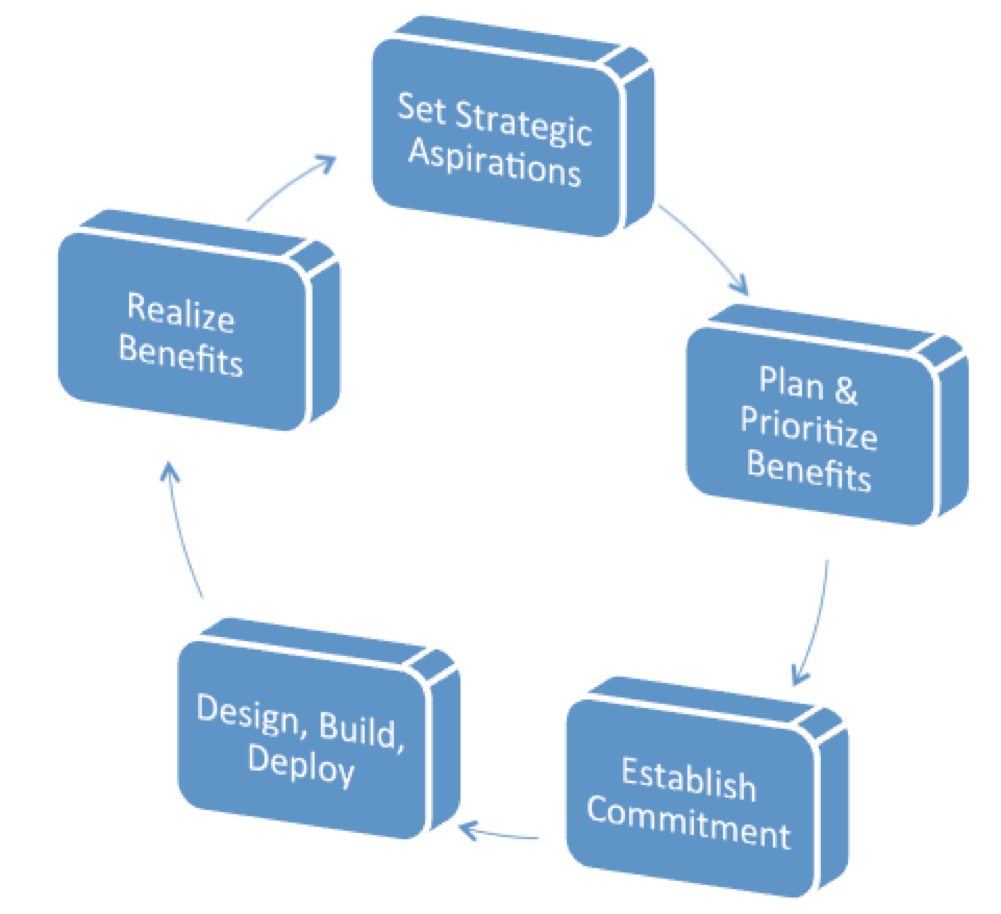The 5 Steps of Strategic Implementation
As we approach the New Year, many of us are setting new aspirations for our health, relationships, and professional achievements. On a corporate level, budgets are being “reloaded”, sales teams are invigorating their energy, and executives are preparing to deliver on a new fiscal year of growth, profitability, efficiency, and effectiveness.
How will you as an individual, team, or corporation achieve these aspirations, which are most likely bold and daring? The critical path is not rocket science.
ere are the five steps:
- Select Strategic Aspirations – You / Your team identify what improvements, growth, changes you aspire to achieve. These are aspirations because they represent a “better” state of yourself or your company that you have not yet achieved.
- Plan & Prioritize Benefits – You / Your team are likely to select strategic aspirations that exhaust your current resources to achieve. Your eyes are likely bigger than your stomach, and they should be. After all, who wants to set boring or “ho-hum” aspirations? In doing so, you need to understand and define the value expected from your aspirations. You also need to appreciate the trade-off decisions you will need to make, and using your value definition, facilitate the trade-off decisions. On a personal level, these trade off decisions are things like going to the gym or watching a movie. On a corporate level, these trade off decisions are things like investing in employee engagement or a new product enhancement. All of your aspirations have value. The best people and companies have a clear articulation of that value and prioritize the importance for themselves.
- Establish Commitment – This step is all about moving from idea and thought into action. While setting, defining, and prioritizing your aspirations are critical, nothing happens until commitment is made and action is taken. Commitment comes in the form of investment and focus as witnessed by spending time and money to achieve the aspiration. Commitment must be sustained as well. Simply spending time and money does not guarantee commitment. Commitment is best measured by the amount of discretionary effort that is dedicated to your aspirations.
- Design, Build, Deploy – With the commitment firmly established with ongoing resources dedicated to maintaining the commitment, the future state gets designed, built, and deployed into real-life tangible solutions like going to the gym, eating more healthy, launching a new game-changing product, or deploying a new more efficient process.
- Realize Benefits – Finally, it is critical to measure the value you have actually delivered. Did you achieve the aspiration you selected in step 1 and defined in step 2? How often do you step on the scale to weigh yourself after healthy eating and exercise? Corporations need to perform this same measurement with a simple audit of the benefits identified in step 2. This feedback loop provides learning opportunities and should be used to restart this 5 step process at the beginning of the next cycle.
Five Steps is all it takes. However, too often individuals and corporations take short cuts by only executing step 1 and 4. This cutting corners can cause unexpected circumstances that undermine your ability to achieve your strategic intentions.
- Skipping step 2 creates an environment where every aspiration is the most important aspiration. Focus gets lost, political agendas take over, and priorities are negotiated on a daily basis by everyone in your company creating chaos and confusion in your company.
- Skipping step 3 leaves your employees unclear on how they relate to and deliver against your aspirations. Time and resources get spent on your aspirations, but no one understands why they are being asked to support these new aspirations. Indifference dominates the troops. Leaders on the hook to deliver on the metrics that relate to the aspirations resort to more “command and control” generating more withdrawal, speculation and distrust. “Duck and cover” becomes the operating culture.
- Skipping step 5 leaves your company with a void of any achievement. Did we achieve our aspirations? If we did, shouldn’t we celebrate? If we didn’t, are we courageous enough to face the facts so we eliminate any mistakes in future years? If you didn’t, and your employees know it, and you don’t face the underperformance as a learning opportunity, you are telling your employees that it is OK to underperform because we’ll just ignore it.
In the end, these 5 steps are strategic implementation hygiene. They are not hard to implement, and cutting any of the steps out seriously jeopardizes your ability to be successful. Most companies have several of these steps implemented. The improvement opportunity is in building out capability around the missing steps to put yourself in a better position to achieve your aspirations.

